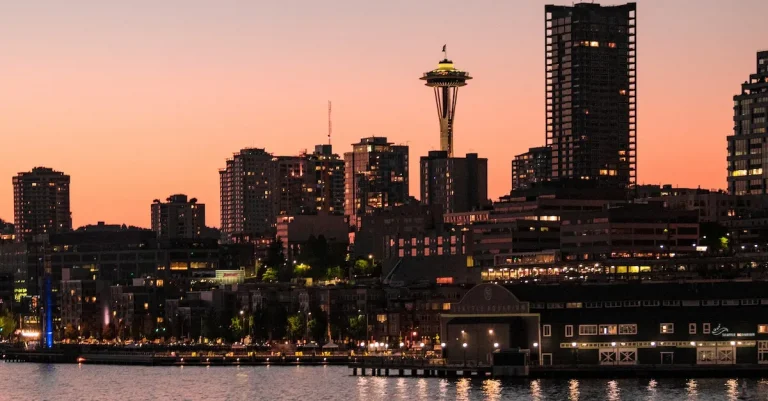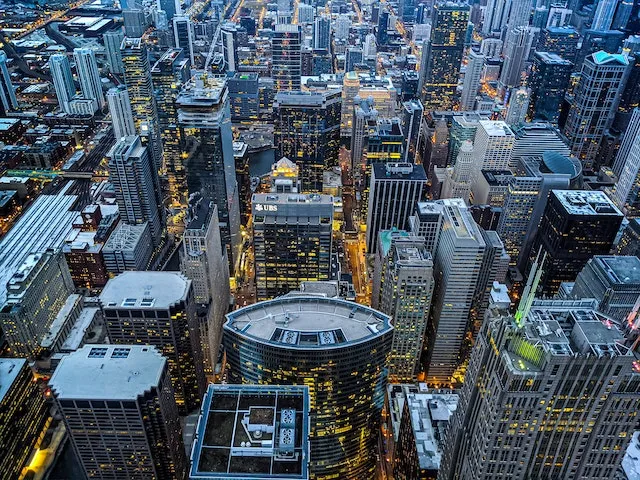Is Los Angeles Humid? Examining The Climate
With its sunny skies and proximity to the Pacific Ocean, Los Angeles enjoys a pleasant climate year-round. But does that equate to high humidity levels? If you’re short on time, here’s a quick answer to your question: Los Angeles has relatively low humidity compared to many other major U.S. cities, though levels can rise slightly in the summer.
In this comprehensive guide, we’ll examine L.A.’s humidity patterns throughout the seasons, look at factors impacting moisture levels, and compare humidity statistics to other major metropolitan areas.
Los Angeles Humidity by Season
Winter Humidity Levels
Los Angeles is known for its mild and pleasant winters, with average temperatures ranging from the mid-60s to low 70s Fahrenheit. In terms of humidity, winter in Los Angeles tends to be relatively low.
The city experiences a Mediterranean climate, which means it has dry summers and mild, slightly wetter winters. During the winter months, humidity levels in Los Angeles typically range from 30% to 50%.
This lower humidity makes the cooler temperatures more comfortable for residents and visitors alike.
Spring Humidity
As spring arrives in Los Angeles, there is a slight increase in humidity compared to the winter months. The average humidity levels during spring range between 40% and 60%. This increase in humidity is due to the gradual warming of the region as it transitions from winter to summer.
However, even with the rise in humidity, Los Angeles still maintains a relatively dry climate, making it a popular destination for those seeking mild and enjoyable spring weather.
Summer Humidity
Summer in Los Angeles brings warmer temperatures and a slight increase in humidity. During the summer months, the average humidity levels range from 50% to 70%. While this may seem high, it is important to note that Los Angeles is not considered a particularly humid city compared to other regions.
The coastal location of the city and the presence of ocean breezes help keep the humidity in check. However, it is advisable to stay hydrated and take necessary precautions during the hottest days of summer.
Fall Humidity
As fall approaches, the humidity in Los Angeles starts to decrease once again. The average humidity levels during the fall season range between 40% and 60%. Fall in Los Angeles is known for its pleasant weather, with temperatures starting to cool down after the summer heat.
The lower humidity levels during this season contribute to the comfortable and enjoyable outdoor activities that residents and visitors can partake in.
What Impacts Los Angeles Humidity?
Los Angeles, known for its sunny weather and warm temperatures, does have some level of humidity. Several factors contribute to the humidity levels in this vibrant city. Let’s take a closer look at what impacts Los Angeles humidity:
Proximity to the Pacific
One of the main factors influencing the humidity in Los Angeles is its proximity to the Pacific Ocean. Being located on the coast, the city is susceptible to the moist air coming from the ocean. This moisture can contribute to higher humidity levels, especially during certain times of the year.
Coastal Sea Breezes
The coastal sea breezes also play a significant role in Los Angeles’ humidity. During the day, as the land heats up, cooler air from the ocean rushes in to replace it, creating a sea breeze. This breeze can bring in moisture, increasing the humidity in the area.
Geography of the LA Basin
The geography of the Los Angeles Basin also contributes to its humidity levels. The basin is surrounded by mountains, which can trap moisture and prevent it from dissipating. This can result in higher humidity levels, especially in areas closer to the mountains.
Urban Heat Island Effect
The urban heat island effect is another factor that impacts Los Angeles’ humidity. The city’s extensive urbanization and high population density can lead to increased temperatures. Higher temperatures can enhance the evaporation of moisture, leading to a higher humidity level in the surrounding areas.
Understanding the factors that impact Los Angeles’ humidity can help residents and visitors prepare for the weather conditions they may encounter. Keep in mind that humidity levels can vary throughout the year, so it’s always a good idea to check the forecast before planning any outdoor activities.
Comparing Los Angeles Humidity to Other Cities
When it comes to discussing the climate in Los Angeles, one of the factors that often comes up is humidity. While many people may assume that Los Angeles is a humid city due to its proximity to the Pacific Ocean, the reality is quite different.
Los Angeles has a unique Mediterranean climate characterized by mild, wet winters and hot, dry summers. Let’s take a look at how the humidity in Los Angeles compares to other cities across the United States.
Humidity in Miami
When it comes to humidity, Miami is often considered one of the most humid cities in the United States. The warm temperatures and proximity to the Atlantic Ocean contribute to the high levels of humidity experienced in Miami throughout the year.
The humidity in Miami can often reach 80% or higher, making it a place where you can practically feel the moisture in the air.
New Orleans Humidity Levels
New Orleans is another city known for its high humidity levels. Located in the southern part of the United States, New Orleans experiences a humid subtropical climate with hot, humid summers and mild winters.
The average humidity in New Orleans is around 75%, creating a sticky and muggy atmosphere that is characteristic of the city.
Humidity in Las Vegas
On the other end of the spectrum, we have Las Vegas, a city known for its dry desert climate. While Las Vegas may be located in the desert, it experiences low humidity levels throughout the year. The average humidity in Las Vegas is around 30%, which is significantly lower compared to cities like Miami and New Orleans.
This dry climate is one of the reasons why Las Vegas is a popular destination for those seeking relief from high humidity levels.
New York City Humidity
New York City experiences a humid subtropical climate, similar to that of New Orleans. The humidity in New York City can vary depending on the season, with the summer months being the most humid. On average, the humidity in New York City ranges from 50% to 70%, which is lower than the levels experienced in Miami but higher than those in Los Angeles.
Conclusion
While humidity in Los Angeles fluctuates across seasons, the region experiences lower average humidity than many other major metropolises. Factors like the nearby Pacific Ocean, regular sunny days, and the LA Basin geography all contribute to more comfortable moisture levels. However, as a large urban area, L.A. is not immune to climbing humidity during the hottest summer months.








